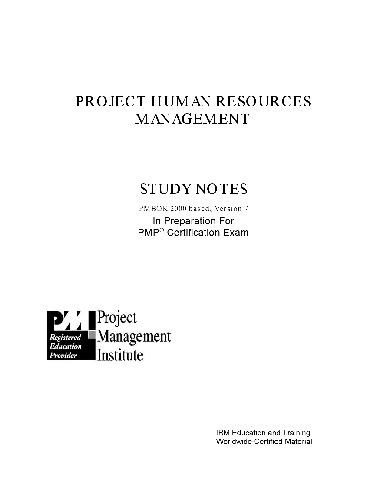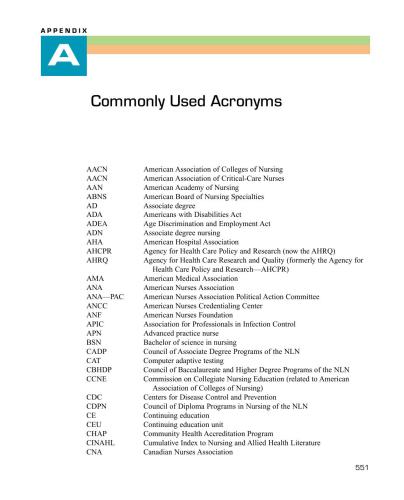John Moran9780643091238, 9780643093133, 0643091238
Table of contents :
Foreword……Page 4
About the author……Page 5
Other books and technical manuals by the author……Page 6
Acknowledgments……Page 7
Chemical warning……Page 8
Contents……Page 10
1.1.1 Aims of the manual……Page 18
1.1.2 Outline of the manual……Page 19
1.1.3 Sources of information……Page 20
1.1.4 Role of the manual in training programs……Page 21
1.2 Nutrients for dairy cows……Page 24
1.2.4 Fibre……Page 25
1.2.5 Vitamins and minerals……Page 26
2 Tropical dairy systems……Page 28
2.1 Features of tropical dairy systems……Page 29
2.2 Dairying in the humid tropics, specifically in South-East Asia……Page 30
2.3 Future demands for milk and milk products in South-East Asia……Page 33
2.4 Current farmer returns for fresh local milk in South-East Asia……Page 34
3.1 Features of small holder dairy systems……Page 36
3.1.1 Peri-urban versus rural-based systems……Page 38
3.2 Descriptors of small holder dairy systems……Page 39
3.3 Benefits of intensifying small holder dairying……Page 41
4.1 Dry matter……Page 44
4.2.1 How energy is measured……Page 46
4.2.3 Energy and milk production……Page 49
4.3.1 Types of protein……Page 50
4.4 Fibre……Page 51
4.4.2 Measuring fibre……Page 52
4.6 Essential nutrients and sources summary……Page 53
4.7.1 Fresh forages……Page 54
4.7.4 Hays and straws……Page 56
5 How the rumen works……Page 58
5.1.1 Rumen and the reticulum……Page 59
5.1.2 Microbes of the rumen and the reticulum……Page 60
5.1.5 Abomasum……Page 61
5.2 Carbohydrate digestion in the rumen……Page 62
5.2.4 The products of carbohydrate digestion……Page 63
5.3 Digestion of protein……Page 65
5.4 Digestion of fats……Page 66
6 Nutrient requirements of dairy cows……Page 68
6.2.2 Activity……Page 69
6.2.4 Milk production……Page 70
6.2.5 Body condition……Page 72
6.2.6 Effect of climatic stress on energy requirements……Page 73
6.3.1 How milk production affects requirements for RDP and UDP……Page 74
6.5.1 Vitamins……Page 75
6.5.2 Minerals……Page 76
7 How feed requirements change during lactation……Page 78
7.1 Calving to peak lactation……Page 79
7.4 Dry period……Page 80
8 Growing quality forages……Page 82
8.1.1 Overcoming the high cost of concentrates……Page 83
8.1.2 Milk responses to improving forage quality……Page 84
8.2.1 Selection of forage species……Page 85
8.2.3 Fertilising the crop……Page 91
8.2.4 Benefits of mixed swards……Page 95
8.2.5 Harvesting the crop……Page 96
9 Making quality silage……Page 100
9.1.1 The four phases of silage making……Page 101
9.2 Why make silage?……Page 102
9.4 How much silage should be made?……Page 103
9.5.2 Wilt the forage to 30% DM……Page 104
9.5.5 Compact the forage as tightly as possible……Page 106
9.5.7 Seal storage air tight……Page 107
9.5.9 Feed out a whole face of the storage……Page 109
9.6 Silage from by-products……Page 110
9.6.1 Sources of by-products……Page 111
9.6.2 Principles of ensiling by-products……Page 112
9.6.3 Silage from maize crops and maize by-products……Page 113
10.1 Choice of supplement……Page 116
10.1.1 Defining the nutritive value of supplements……Page 117
10.2.1 Types of energy supplements……Page 118
10.2.2 Milk responses to energy supplements……Page 119
10.3 Protein supplements……Page 120
10.4 Basal forages and forage supplements……Page 121
10.6 Agro-industrial by-products……Page 124
10.7 Chemical treatment of low quality roughages……Page 125
10.8 Molasses urea blocks……Page 128
11 Milk responses to supplements……Page 130
11.1 Substitution for basal forage……Page 131
11.2.1 Decreasing marginal responses……Page 132
11.3 Factors affecting milk responses……Page 133
11.3.2 Quality of basal forage……Page 134
11.3.3 Quality of supplement……Page 135
11.3.4 Allocation of supplement……Page 136
11.4.1 Presentation of the forage……Page 137
11.4.2 Presentation of the concentrates……Page 140
11.4.3 Total mixed rations……Page 141
11.5.1 Induced protein deficiencies……Page 143
11.5.3 Feeding milking cow supplements to young stock……Page 144
11.6.1 Energy content of the diet……Page 145
11.7 When is supplementary feeding profitable?……Page 147
11.7.4 Other reasons for feeding supplements……Page 148
12 Formulating a diet……Page 150
12.1.1 Cow requirements……Page 151
12.2.1 Cow size and feed quality……Page 152
12.2.2 Examples of intake predictions……Page 154
12.3 Animal production level……Page 155
12.5 Computer aids to ration formulation……Page 157
12.5.2 NRC……Page 158
12.5.4 KYMILK, KYHEIF and the TDN Workbook……Page 159
Work sheets 1, 2 and 3……Page 160
13.1 Some indicators of unbalanced diets……Page 164
13.2 Metabolic disorders and unbalanced diets……Page 165
13.2.1 Milk fever……Page 166
13.2.2 Grass tetany……Page 167
13.2.4 Lactic acidosis……Page 168
13.2.5 Feed toxicities……Page 169
13.3 Buffers……Page 170
13.4 Other feed additives……Page 171
13.5 Troubleshooting feeding problems……Page 172
13.6 FAO guide to good dairy farming practice……Page 173
14 Diet and milk production……Page 176
14.1 Fate of the products of digestion……Page 177
14.2.3 Fat production in the udder……Page 178
14.2.5 Summarising nutritional effects on milk composition……Page 179
14.3.1 Body condition in early lactation……Page 181
14.3.3 Summary of milk production and body condition……Page 182
14.4.1 Theoretical models of lactation persistency……Page 184
14.4.2 Effects of diet on lactation persistency……Page 186
15 Nutrition and fertility……Page 188
15.1 Measures of reproductive performance……Page 189
15.2 Non-nutritional factors that affect reproductive performance……Page 191
15.3.1 Energy intakes and balance……Page 194
15.3.2 Some implications for management……Page 196
15.3.4 Intakes of minerals, trace elements and vitamins……Page 197
16 Nutrition and young stock……Page 200
16.1.1 Colostrum feeding……Page 201
16.2 A successful early weaning recipe for calf rearing……Page 202
16.3.1 Fertility……Page 204
16.4.1 Live weight……Page 205
16.4.3 Age of teeth eruption……Page 206
16.6 Feeding heifers to achieve target live weights……Page 207
17 Economics of feeding dairy cows……Page 208
17.2 Defining ‘milk income less feed costs’……Page 209
17.3.1 Introduction to case studies……Page 210
17.3.2 Case study 1: Formulating least cost rations……Page 213
17.3.4 Case study 3: Feeding cows during the dry season……Page 214
17.4 Determining the optimum herd size……Page 215
17.5 Other factors influencing herd profitability……Page 216
17.6 Improving unit returns for milk……Page 217
17.6.2 Milk quality……Page 218
17.7.2 Comparing farming systems in Vietnam……Page 221
17.8 Flow charts of feeding decisions that drive profit……Page 224
18 Body condition scoring……Page 226
18.1 The system of condition scoring……Page 227
18.2 Examples of body condition scores……Page 229
18.3 Target body condition scores……Page 230
18.3.2 Interpreting changes in body condition during early lactation……Page 231
18.4 Effect of suboptimal body condition on cow performance……Page 232
18.4.1 Effects on reproductive performance……Page 233
18.4.2 Effects on milk production……Page 235
19 Overcoming environmental constraints to cow performance……Page 236
19.1.1 Genotype by environment interactions……Page 237
19.1.2 Specially bred tropical dairy genotypes……Page 238
19.1.3 Problems of confinement……Page 239
19.2.1 Direct effects on cow performance……Page 240
19.2.3 Designing cattle housing to minimise heat stress……Page 242
19.2.4 Management practices to minimise heat stress……Page 245
19.3.2 Effluent disposal systems……Page 247
19.4.1 Animal and human health……Page 248
19.4.2 Feet and leg problems……Page 249
19.5 Importing cows and heifers from other countries……Page 250
19.5.2 Importing young heifers……Page 251
19.5.4 Satisfying customer demands……Page 252
20 Future developments in feeding management in the humid tropics……Page 256
20.1 Determining optimum on-farm stocking capacities……Page 257
20.2.1 Variability in nutritive value……Page 259
20.2.3 Maize and its by-products……Page 260
20.2.4 Milk to concentrate ratios in production rations……Page 262
20.2.5 Marginal milk responses……Page 263
20.2.7 Diagnosis of poor farm profitability……Page 264
20.2.10 Growing young stock……Page 265
20.2.12 Demonstration or model farms……Page 266
20.2.14 The role for forage legumes……Page 267
20.2.15 An alternative approach to developing feeding systems……Page 268
20.3 Cassava–cowpea rotation: An innovative dairy feeding system……Page 269
20.4.1 An inventory for dairy research in the humid tropics……Page 271
20.4.2 The goals for dairy research in the humid tropics……Page 273
20.5 Improving current dairy feeding systems in the humid tropics……Page 275
20.6 Future directions for small holder dairy production in the humid tropics……Page 277
References and further reading……Page 280
Glossary and abbreviations……Page 286
Appendix 1 Temperature Humidity Index……Page 292
Appendix 2 Conversion of units of measurements……Page 293
Appendix 3 Currency converter for South-East Asia……Page 295
Appendix 4 Vitamins and minerals required by dairy cows……Page 296
Appendix 5 Tables of nutrient requirements……Page 299
Appendix 6 Exercises from the manual……Page 303
Index……Page 310







Reviews
There are no reviews yet.